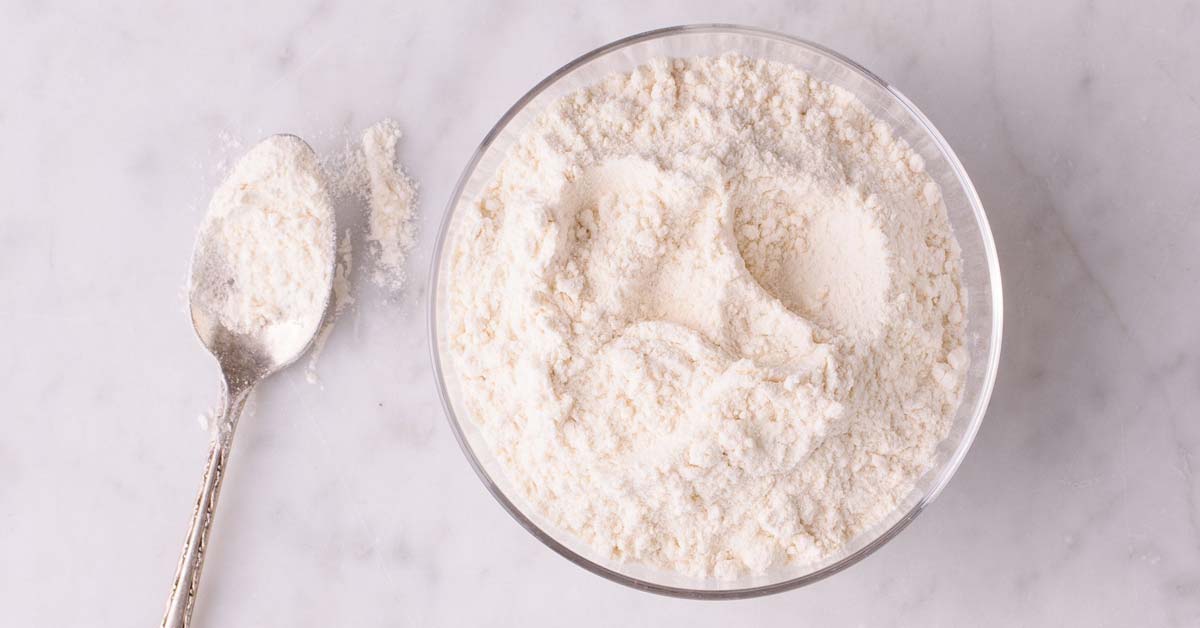Food diversification is getting common with growing population. One of the efforts to support the food diversification program to utilize the potential of Indonesia’s food is the development of gluten-free flour1, 2.
Gluten-free flour consists of several carbohydrates, proteins and fats that can produce a food that has characteristics similar to flour. One local food that can be a source of carbohydrates is Arrow root. It is a local tuber commonly used as an ingredient for traditional foods. These tubers contain starch and other compounds and have a high amount of dietary fiber3.
Arrow root scientifically known as Maranta arundinacea has various culinary uses in cookies, cakes, pudding, porridge, fruit pie fillings and glazes as a thickening agent. These tubers contain high amount of carbohydrates due to which it is often used as a substitute for carbohydrates.
Carbohydrate sources can be physically modified for use by people who are sensitive to gluten, have celiac disease or require glucose and lipid control. Physical modifications have been carried out to increase levels of resistant starch with the autoclaving-cooling process; this process causes the starch to undergo retro-gradation and increases levels of resistant starch4.
Maranta arundinacea or Arrow root flour is rich in resistant starch, which results in the high-selling prices of arrow root flour-based products rich in resistant starch type 3 (RS3). Its flour is rich in RS3 can be used as a gluten-free flour ingredient as gluten-free flour enriched with RS3 from arrow root flour can be consumed by gluten allergy sufferers.
In this scenario a new study was carried out which aimed to identify the potential of gluten-free enriched RS3 from arrow root as a functional food by evaluating its chemical composition and its ability to control glucose, lipids and short-chain fatty acids in healthy mice5.
Three types of short-chain fatty acids were studied here: Acetate, propionate and butyrate. Short-chain fatty acids (acetate and propionate) play a key role in lowering serum cholesterol and triglycerides6. The presence of dietary fiber and resistant starch in the diet reduces the digestion and absorption of carbohydrates and increases the sensitivity of muscle and adipose tissue to insulin, allowing for greater gluconeogenesis, thereby contributing to the reduction of hyperglycemia7.
Thus, physical modification with 3-cycle autoclaving-cooling can increase levels of resistant starch type 3 in arrow root flour compared to native flour. The three types of gluten-free flour produced contained different characteristics. High-fiber gluten-free flour had high soluble dietary fiber, insoluble dietary fiber and total dietary fiber content. High-protein gluten-free flour had high protein content, whereas self-rising flour had high levels of ash and high levels of minerals. The three types of gluten-free flour positively impacted glucose, lipids and short-chain fatty acids at normal levels. These results indicate that gluten-free enriched RS3 flour from Maranta arundinacea can potentially be used as a functional food.
Keywords:
Proximate analysis, gluten-free flour, Maranta arundinacea, resistant starch type 3, functional food, High-fiber gluten-free flour, physical modification, autoclaving-cooling.
References:
- Food Plant Solution-Indonesia, 2015. A potentially important food crops in Indonesia.
- Zannini, E., Pontonio, E., Waters, D. M., & Arendt, E. K. (2012). Applications of microbial fermentations for production of gluten-free products and perspectives. Micro. Biotech., 93(2), 473-485.
- Chandrasekara, A. and T.J. Kumar, 2016. Roots and tuber crops as functional foods: A review on phytochemical constituents and their potential health benefits. J. Food Sci.
- Shi, M.M. and Q.Y. Gao, 2011. Physicochemical properties, structure and in vitro digestion of resistant starch from waxy rice starch. Polym., 84: 1151-1157.
- Mutiara N., Badraningsih L. and Sutriyati P., 2017. Proximate and Chemical Analysis of Gluten-free Enriched, Resistant Starch Type 3 from Maranta arundinacea Flour and its Potential as a Functional Food. J. Nutr., 16: 322-330.
- Herrmann, C., R. Goke, G. Richter, H.C. Fehmann, R. Arnold and B. Goke, 1995. Glucagon-like peptide-1 and glucose-dependent insulin-releasing polypeptide plasma levels in response to nutrients. Digestion, 56: 117-126.
- Robertson, M.D., A.S. Bickerton, A.L. Dennis, H. Vidal and K.N. Frayn, 2005. Insulin-sensitizing effects of dietary resistant starch and effects on skeletal muscle and adipose tissue metabolism. J. Clin. Nutr., 82: 559-567.

COMMENTS